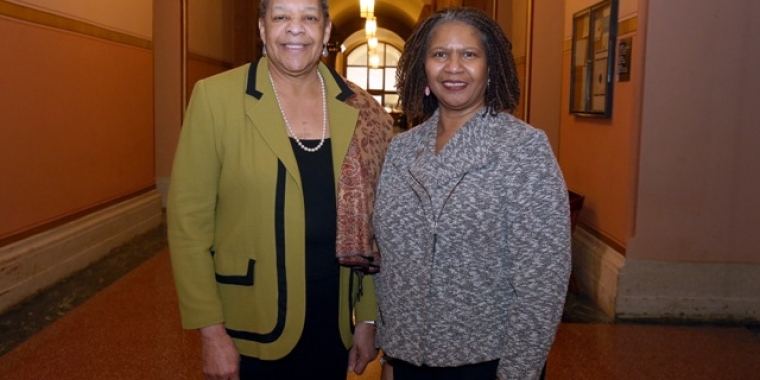
Senate Passes Bipartisan Deficit Reduction Plan
Ruth Hassell-Thompson
December 2, 2009
-
ISSUE:
- Budget
Cuts nearly $3 billion in spending while preventing tax hikes and loss of aid to vital services
(Albany, NY)- The New York State Senate passed a bipartisan deficit reduction plan that protects jobs, prevents tax hikes and saves hundreds of millions of dollars in critical school funding. The legislation passed by the Senate closes nearly $3 billion of the state’s budget gap.
Prior to the passage of the deficit reduction plan, the Senate conducted four statewide budget hearings. Throughout the hearings, the Senate heard testimony from thousands of individuals and community based organizations who expressed an overwhelming desire to participate in the budget process that ultimately determines how their tax dollars are being spent.
Following two months of bipartisan negotiations, the Senate achieved its goal of balancing the budget without any new taxes or fees of any kind. The Senate successfully fought to:
· Cut education spending without imposing midyear school cuts that would have taken money out of classrooms and potentially raised property taxes for working families;
· Reduce health care spending without the loss of approximately $750 million in federal funding for medical services; and
· Prevent the loss of over 12,000 jobs from cuts to vital services.
“My colleagues and I have protected New York’s residents from hurtful cuts to their education and healthcare institutions. Due to the mounting deficit facing New York State, difficult decisions must be made and that is what my colleagues and I will focus on in the immediate future until we have long-term financial goals to jump-start our economy.”
Among the spending reductions passed by the Senate (other than the $485 million in agency cuts to be enacted by the Governor):
· 12.5 percent cut to remaining balances of local assistance grants;
· 5 percent cut to operating aid for SUNY, CUNY and community colleges;
· 5.4 percent cut to the Office of Mental Retardation and Developmental Disabilities; and
· $107 million in health care actions.
Several one-time legislative actions were included in the DRP as well, including:
· $200 million from the Battery Park City Authority;
· $90 million from the Regional Greenhouse Gas Initiative;
· $10 million from the Environmental Protection Fund; and
· $26 million from the Dormitory Authority.
By working with the Governor and Assembly to find alternative cuts, the Senate successfully turned back a number of proposals that would have cost the state hundreds of millions in lost funding, established new taxes and left nursing homes without the funding they needed to continue vital services for our elderly.
· The Senate stood firm against the imposition of any new taxes on New Yorkers or businesses by reversing the Governor’s proposal to more than double the gross receipts tax on hospitals (from .35% to .75%,).
· The Senate ensured that outside sources of funding remain strong by finding more sensible cuts than the proposed $287 million to Medicaid programs, which would have triggered the loss of hundreds of millions in federal matching funds—the state would have lost $1.60 for every dollar saved, totaling $746 million (state and federal share).
· The Senate eliminated the plan to delay rebasing payments to nursing homes and hospitals (costing them $60 million). The original proposal would have had a particularly negative impact on those Upstate and in suburban providers.
###
Share this Article or Press Release
Newsroom
Go to NewsroomShawyn Patterson Howard
May 13, 2015

EARTH DAY 2015 POSTER CONTEST: DISTRICT 36
April 10, 2015

